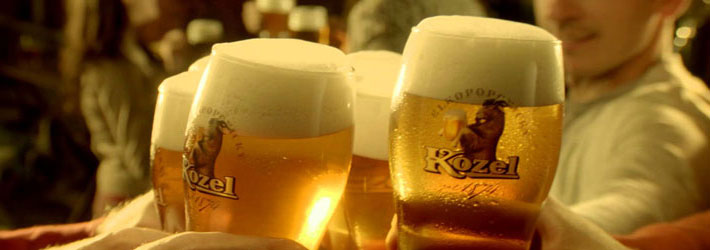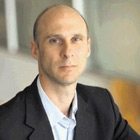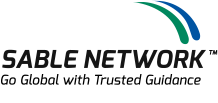sable blog post« Back to Blogs Listings
October 20, 2015

How a Joburg Brewery Grew to Become a $100B Global Prize
Rowan Philp
In a gothic castle in Transylvania in 2007, Alan Clark showed me a bottle of beer with a goat on the label.
Clark - the SABMiller CEO who struck a world-shaking, $104 billion deal this week – chuckled and said: “One brand that has really surprised us is this Czech beer, Kozel. The icon is a goat; the word ‘Kozel’ actually means goat; and the advertising campaign is about a goat! “We thought: Why on earth is this brand so popular? What is driving it?”
Clark was hosting a small group of business journalists on a five-day tour of Poland, Hungary and Romania, to showcase the latest of SABMiller’s massive conquest inventory of local breweries in central and Eastern Europe.
Although he added efficiency innovations to its marketing and distributions channels, Clark was careful to make no changes to the seemingly odd goat branding of Kozel.
Likewise, when SABMiller acquired Hungarian brand Arany Aszok – which translates as “Golden your pleasure” – the only evidence that a South African company owned it could be found on internal company slides.
Instead, Clark’s team doubled-down on the beer’s local marketing push “to celebrate the little successes” of each day of the week, by innovating a 7-pack beer carrier.
The day before, at a newly acquired brewery in Budapest, Clark told me: “We deliberately focus on local. This is key for consumers here. We also want [employees] to know they work for Dreher Breweries, or Kompanya Piwowarska in Poland, or Ursus in Romania, etc.
While western brewery giants have focused on global brands, like Heineken and Budweiser, SABMiller has outperformed everyone by acquiring and boosting – and preserving – more than 200 local brands in 75 countries. And most of the countries it has chosen for market conquest are proving to be the fastest-growing consumer markets in the world. Experts say it has succeeded in these difficult markets partly thanks to a uniquely South African business philosophy, to “pay your school fees” – which translates as “toughing it out” in the first year in order to learn local requirements, and discover the unique desires of local customers.
South African Breweries was born in response to the gold rush in Johannesburg – with the iconic brew-master Charles Glass creating Castle Lager. This week, it was the target of a second gold rush of the same global scale – the liquid gold of the only rapidly growing international beer markets.
Its annual report last year was entitled “Building brands; brewing value” - and this is the recipe which has taken South African Breweries from a brewer for 1890’s mining prospectors in Johannesburg to the target of the world’s largest commercial acquisition this year. If concluded, the deal with Anheuser Busch Inbev will create a company worth $276 billion, with $55 billion in global sales.
This week – in a critical reassurance for South African investors - a spokesman for AB Inbev confirmed that the new giant company would retain its listing on South Africa’s JSE.
And the 50% premium on SABMiller’s share price represents the ultimate vindication of the company’s strategies for local brands, emerging market conquest, and innovation.
Last week, Anheuser Busch Inbev stated: “Given the largely complementary geographical footprints and brand portfolios of AB InBev and SABMiller, the combined group would have operations in virtually every major beer market, including key emerging regions with strong growth prospects such as Africa, Asia, and Central and South America.”
INNOVATION AT THE HEART OF SAB’S SUCCESS
Across Europe, SABMiller has used data technologies and its own research institute to implement incremental innovations. Across Africa, its innovations have been disruptive – putting countless illicit bootleggers out of business.
In 2011, SABMiller launched a brewing innovation center in the UK, based at the School of Biosciences at University of Nottingham - to drive what it called “a quantum leap in technological and process innovation” to achieve the competitive edge in a hotly contested market.
Professor Barry Axcell, chief brewer at SAB, told Beverage Daily that - compared to the wine and cider industries - the beer brewing process had been “woefully slow to innovate.”
Just three years later, SAB’s subsidiary in the UK was dramatically outperforming UK beer brands, with 5% growth compared to a 1% decline among its rivals. The growth was attributed to innovations like small, 250ml bottles of premium Peroni Nastro Azzuro for pre-dinner drinks events, and the first international beer to enter the UK market in unpasteurized form, bringing freshness to connoisseurs.
In Africa, where home-made beer represented 80% of consumption, and average consumers must work more than 2 hours to afford half a liter of quality beer – SABMiller’s value innovations to make factory-made beer affordable have been truly disruptive.
According to SABMiller’s 2014 Annual Report, Africa is the cutting edge of innovation for the global beer industry: “We have moved further into making beer affordable in developing markets, particularly in Africa, where the price relative to wages is high. This takes many forms, from offering a greater range of pack sizes to expanding traditional beers and using local crops like sorghum to brew affordable beer. The latter approach attracts an excise break from governments, which means that we are able to sell at a discount to our mainstream brands, and offer an alternative to illicit alcohol.”
Given the dangerous and sometimes toxic elements of Africa’s bootleg beers, many experts have credited SABMiller’s dramatic expansion there with literally saving countless lives on the continent.
Despite criticism from anti-alcohol lobby groups, the company has been widely credited for effective social responsibility and community upliftment projects, including responsible drinking campaigns.
For Clark, company responsibility extends far beyond excess consumption.
In 2007, I left the SABMiller tour for a day to report on violent anti-government riots outside the presidential palace in Budapest. When I next met Clark aboard the SAB corporate jet, I mentioned to him that I had noticed that hundreds of SABMiller beer bottles had been thrown at riot police.
Clark was visibly horrified, and hinted that company executives should think of solutions even to these kinds of unintended consequences of brand success. He said: “We believe beer is a local industry; but we also want local accountability.”
SAB’S ROOTS OF GLOBAL GROWTH
The 120 year story of South African Breweries is one of innovation in the early 20th century; key acquisition in the 50s; diversification in the 1970s, a refocus on beer in the 1990s; and dramatic global expansion since.
It began in the late 1880s, with Glass selling his quality beer to prospectors from a wheelbarrow, and turning the business into a 50,000 barrel production by 1895.
Having been the very first industrial share to list on the Johannesburg Stock Exchange in 1897, its early history includes the disruptive innovation strategy of offering barley seed free of charge to farmers from 1911. During World War 1, it took over the defunct Union Glass company to counter the chronic wartime shortage of bottles. “Castle Breweries” invested in breweries, pubs and hotels after World War II, and in 1956, cemented arguably its most important M&A in acquiring its larger rivals – Ohlssons and Chandler’s Breweries - to become the dominant regional player.
During a decade of forays into the footwear, apparel and retail markets in the 1970s, SAB made the near fatal mistake, according to its own historians, of changing the classic bitter taste of Castle Lager in line with the recommendations of “expert” tasters. Echoing the famous mistake made a decade later in the US with “New Coke,” the error was quickly reversed – “hammering home the lesson that the brand does not belong to the brewer nor to the marketer, but to the consumer.”
Following a decade of expansion into southern African markets in the 1980s, SAB – armed with domestic sales in excess of 20 million hectoliters – made its first foreign acquisition in 1993, with Hungary’s largest brewery.
In a stunningly bold move, it then acquired a major stake in breweries in China, and now controls 49% of the world’s biggest beer by volume, “Snow”.
SAB returned to its core business of beverages in 1997, and two years later, moved its primary listing to London. Under its new, iconic CEO, Graham Mackay, it commenced its global expansion – starting with a key alliance with the Castel Group, to access African markets.
Under Mackay’s leadership, SAB’s stock value would increase 1000% in 14 years.
In 2000 and 2001, SAB acquired brands in India, Honduras and El Salvador – and then stunned western rivals in 2002 by acquiring the number two brewer in the USA: Miller, making the South African company the world’s second largest brewer by volume.
Major acquisitions since have included Grolsch, Coors, and Fosters.
And while premium brands like Peroni, Grolsch and Fosters now fall within the SABMiller stable, industry experts say it’s the scores of small, local brands in every corner of the globe which define the growth of this African giant.
In an obituary on Mackay in 2013, the Washington Post noted that “Mackay recognized that South African exchange controls and a depreciating rand constrained the company’s ambitions,” and quoted industry expert Roy Summers as saying: “By getting on the world stage they would make more money — and invest it into South Africa.”
This year, Clark wrote: “Our local approach means we are very much part of the communities in each of our markets. We are creating real and lasting economic and social benefits in these communities, building supply chains, creating employment and managing impact on the environment. Our people are skilled in and passionate about brewing beer and creating winning brands. They are our source of enduring advantage.”

Rowan Philp is a multiple award-winning writer, news editor, journalism coach and foreign correspondent, who has covered conflict, business, public health, science, news events and foreign policy from 27 countries. Previously, he was the Chief Reporter for Africa's leading newspaper - the Sunday Times (South Africa) - for most of the past decade; a period book-ended by fellowship stints at the Washington Post and at Harvard/ MIT.

